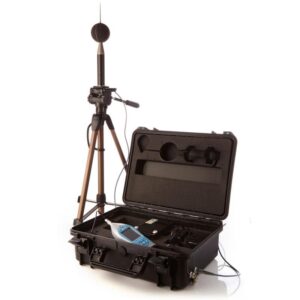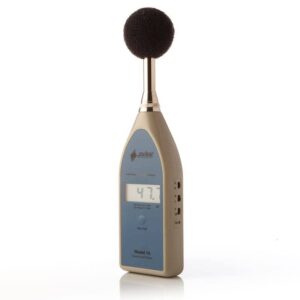Recommended products from Pulsar Instruments™
-

7-year
Warranty
Nova Environmental Sound Level MeterFrom: £2,439.00 (Ex. VAT/GST) -

7-year
Warranty
Pulsar Nova Outdoor Noise Measurement SystemFrom: £1,610.00 (Ex. VAT/GST) -

Last Chance
To Buy
Digital Noise Meter for Noise Level TestingFrom: £315.00 (Ex. VAT/GST)
In a world where there is a drive for everything to be quieter, vehicle noise measurement and noise control is a growing application.
Excessive noise from vehicles, including lorries, cars and motorbikes can cause a public nuisance and therefore in many countries, these vehicles are tested annually to make sure they meet national and international standards for noise emissions.
In Europe, vehicle noise regulations are guided by the United Nations Economic Commission for Europe. The Commission dictates that motorcycles should have a maximum noise level between 73 and 77 dB(A), depending on engine size. The legal noise level for a standard car is 82 dB(A).
In Britain motorists are expected to ensure that exhausts and silencers used to muffle noise levels are “maintained in good working order and not altered to increase noise”.
The annual vehicle MOT tests for nuisance noise from both the exhaust system (silencers) and noise from under the bonnet and vehicles can fail if levels exceed the legal maximum. Exhaust noise is assessed during the emissions test for the vehicle or by revving the engine to around 2,500rpm or half the maximum engine speed if this is lower on vehicles not subject to an emissions test. Exhaust noise from the vehicle must not be unreasonably above the noise level normally expected from a similar vehicle with a standard silencer in average condition.
Vehicle exhaust testing
ISO 5130:2007 is an internationally recognised standard for vehicle exhaust noise testing and requires three consecutive measurements to be taken to ensure repeatability. These measurements are taken at a specified engine speed, or RPM, and the maximum sound level produced during the test is taken.
Once three valid measurements have been made, the highest is taken and used as the valid result. The microphone can be placed at the specified measurement position, typically 45 degrees and 0.5m from the exhaust of the vehicle under test.
How to measure vehicle noise and traffic noise
The Pulsar Nova Sound Level Meter is the ideal meter to perform effective vehicle noise measurements. Designed to be used in factories, workshops, garages and test laboratories alike, the Nova is a robust instrument that is simple to operate whilst providing all the measurements you need. If you want to measure traffic noise you will need a sound meter from the Pulsar Nova that can record Ln values.
For quick spot checks, you can also use the Model 14 digital noise meter. This simple, compact, lightweight and easy to use noise meter gives instant measurement results. You can select either ‘A’ frequency-weighting dB(A) or ‘C’ frequency-weighting dB(C). It also includes a Maximum Hold function which is useful when the allowable noise level is given in terms of a maximum (LAFmax or LCFmax).
To discuss the above further or obtain a quotation, please Contact us. Go to our acoustic glossary to understand more about the noise terminology used on this page.
